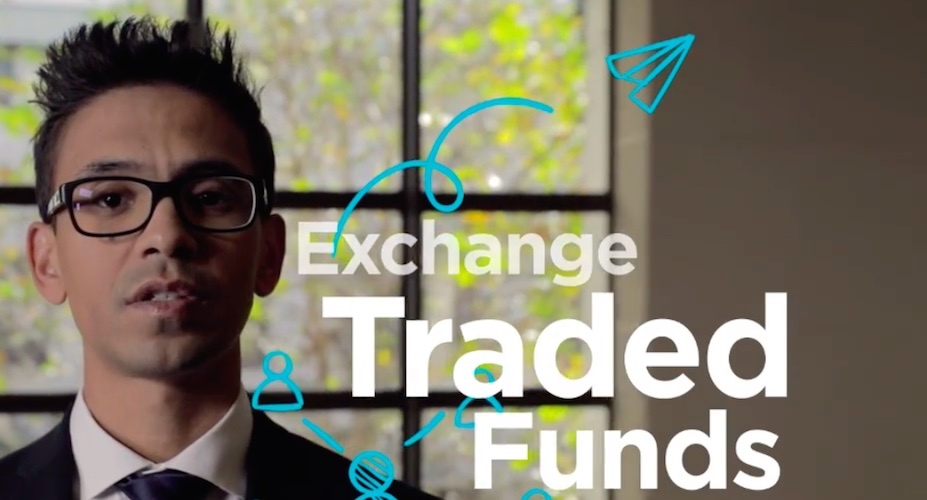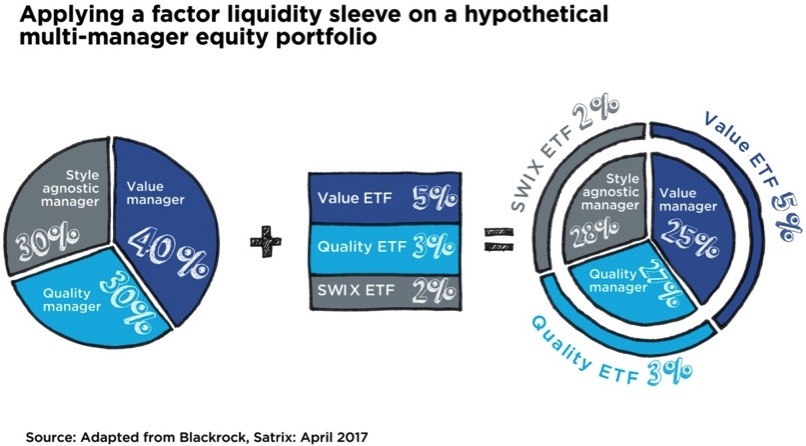
Factor investing #3: Factor liquidity sleeve (using ETFs)
This is the third in our series of articles compiled by Jason Swartz – a member of the team at our partner Satrix – that unpack the concept of factor investing and how it’s used in different situations. Last week we covered Addressing factor gaps or tilts in your portfolio, while this week we look at the use of exchange traded funds (ETFs) in your factor investment strategy.
We will continue publishing an article a week on our blog for the next several weeks.While these articles are aimed at institutional investors, the content is still relevant – and interesting – for individuals who like to know what happens in the background, or who have their own factor investment strategies in place.
Factor investing is one of the tools used by portfolio managers to maximise returns in an investor’s portfolio. Factors employed vary from portfolio to portfolio and from manager to manager. A momentum strategy, for example, focuses on trends in share prices, whereas a value investor would look specifically for shares that he or she believes to be undervalued in the market. More definitions are available here.
Factor liquidity sleeve (using ETFs)
By Jason Swartz, Satrix
Client level of adoption/allocation:

Factor investing has the ability to empower consultants, multi-managers and advisors to build client portfolios of factor investing across this continuum.
In our previous articles we discussed why it’s important to use factor investing to understand where the performance in your portfolio comes from and also how to use portfolio completion to compensate for any tilts or gaps that your portfolio might have.
In this article, the third in our series, we discuss how factor investing can be used to enhance the trading flexibility of a portfolio through the use of ETFs (exchange traded funds) [See Figure 1]. Specifically, we focus on the practical application of building a liquidity sleeve around your portfolio to aid liquidity management in the following scenarios:
1) if the portfolio needs to quickly change its style exposure
2) when the portfolio has large and frequent cash flows in and out of the fund
3) during a period of market stress.
Essentially, constructing a ‘liquidity sleeve’ involves building a portfolio of ETFs around your existing active managers to provide similar market exposure, but with additional liquidity to absorb unexpected changes in the portfolio when needed.

Change style quickly
Using factor ETFs to quickly realign the style exposures of a portfolio can be a useful tool. If you made a decision to change the overall factor exposure of the portfolio, shifting allocations between underlying managers is an option. However, should it be necessary to introduce a new manager, using an ETF to swiftly attain that exposure would mitigate the often lengthy process of manager selection and due diligence.
In addition, in the scenario that an underlying active manager experiences style drift (a change in factor exposure because it’s straying from its self-stated investment objective), the portfolio is at risk of becoming misaligned. Temporarily using an ETF to realign factor exposures would make sense in this case.
Manage large cash flows
If a portfolio experiences large and frequent cash flows in and out of the fund, the fund could incur additional transaction costs if the portfolio rebalances by directly trading the individual securities. If any of the underlying funds hold shares with smaller market capitalisations, acute liquidity problems could arise, including low volume and high bid/offer spreads. This in turn could lead to either delayed trading, a noticeable market impact (moving the price of the assets in an unfavourable direction) or opportunity costs incurred in the fund. Trading in ETFs when dealing with these cash flows is often cheaper than directly trading the underlying securities, as the ETF bid/offer spread can be tighter than on the underlying securities.
Move nimbly under market stress
While ETF prices do fluctuate in line with tough conditions in the market, they have become an important tool that allow investors to observe market movements in real-time, and to transact even when markets are stressed. During these periods, uncertainty could cause many investors to sell shares at the same time, and prices may move sharply in a single day. As prices in the equity market fall quickly, so too will the price of an ETF, reflecting the changing value of the securities it holds. However, because a share and an ETF trade in distinctly different markets, an investor’s ability to quickly sell these two securities can be very different. In well-developed ETF markets, price improvement and the ability to trade during periods of market stress can be hugely beneficial during a period where the liquidity of the underlying shares is low.
In the video below Jason Swartz from Satrix discusses how to use factor investing to move quickly in and out of styles and manage the liquidity in your portfolio:





